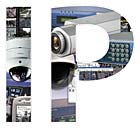IP is IT

To understand the growth of IP security video, you need only to look at the growth of what goes into the technology itself. Mark Kisten of iSuppli Corp., tells me that the exploding market for Internet Protocol (IP) video surveillance cameras and servers will generate nearly a $1 billion opportunity for semiconductors in 2010.
The adoption of IP cameras and IP servers, also known as streamers, is perhaps the most significant trend in video surveillance today.
The aim for many enterprise security executives is complete end-to-end enterprise IP video and alarm management. And no surprise, IP networks are the ideal platform for integrating video and alarms into a single management system.
And video servers mark another path to IP. For instance, the Massachusetts Port Authority has installed video servers to monitor secure areas in Boston’s Logan International Airport.
For IP virgins, IP is short for Internet Protocol. IP specifies the format of packets, also called datagrams, and the addressing scheme. Most networks combine IP with a higher-level protocol called Transmission Control Protocol (TCP), which establishes a virtual connection between a destination and a source.
According to Steve Surfaro of Panasonic Security Systems, there are seven strong reasons for IP video.
1) Power over Ethernet – power supplies and power cabling are not required, reducing labor and cable costs.
2) Lower total cost of ownership for the life cycle of the system – lower installation costs, reduced operational overhead, less maintenance and downtime.
3) Wider distribution of surveillance (viewing anywhere/anytime by numerous individuals).
4) Use existing infrastructure.
5) “Open” infrastructure (with other security systems).
6) Easy navigation, simple use.
7) Scalability – future growth, easy to add cameras (nodes). v
Looking for a reprint of this article?
From high-res PDFs to custom plaques, order your copy today!



